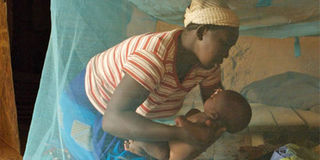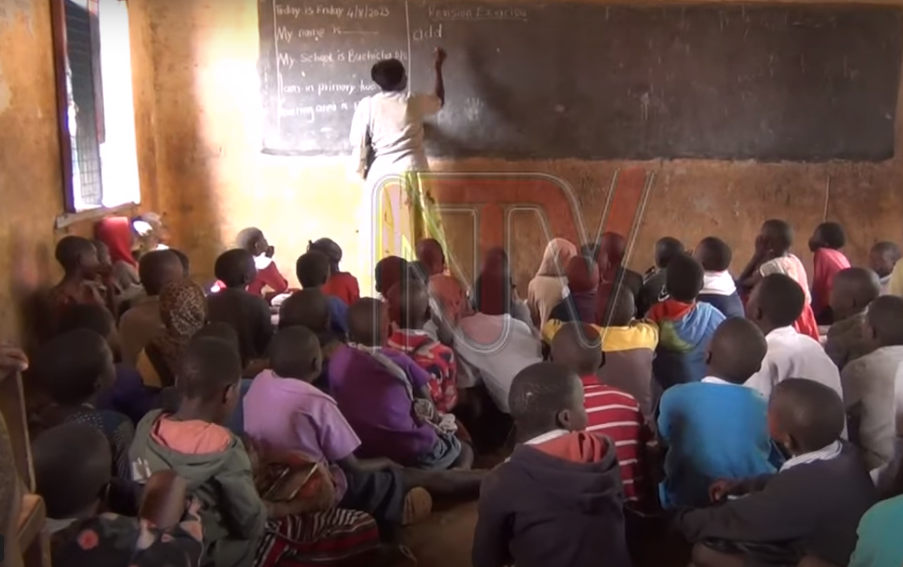US President's Malaria Initiative approves Shs108 billion for Uganda

A woman helps a baby to sleep under a mosquito net.
What you need to know:
- Studies in 2016 found some resistance to high-intensity insecticide dosing of the mosquitoes to permethrin and deltamethrin insecticides used to treat mosquito nets
- An additional five high burden districts in the Eastern region will also be sprayed in 2017. These include Otuke, Alebtong, Dokolo, Kaberamaido and Amolatar
The US President's Malaria Initiative will to provide over $30 million (Shs108 billion) towards malaria control programmes in Uganda.
The money for the 2018 budget has, however, reduced by over $3 million (Shs10.8 billion) from what was provided in 2017.
In 2017 financial year, $33 million (Shs118 billion) was allocated for Malaria Operational Plan for Uganda.
A statement by the US Agency for International Development (USAID) indicates that the 2018 President's Malaria Initiative budget for Uganda will only be funded to the tune of $30 million (Shs108 billion).
The statement does not indicate reasons why the funding has been reduced.
The money, according to the statement, will support the intervention areas of entomological monitoring and insecticide resistance management. The funds are to be used to further promote proven interventions such as Indoor Residual Spraying and the use of Insecticide Treated Nets (ITNS).
Uganda is currently undertaking a major universal coverage campaign, which began in February 2017 and aims to distribute 24 million ITNS through the support of Global Fund Against Malaria Foundation, PMI, and DFID.
With the 2018 funds, the President's Malaria Initiative will procure 500,000 ITNS and distribute them nationwide through the facility-based outreach and traditional school-based distribution network.
The funding will continue to monitor malaria mosquito habitats in our Indoor Residual Spray districts, along with vector resistance status to help better understand malaria mosquito activity in Uganda.
Spraying will continue through PMI funding in nine Eastern Uganda districts with high malaria prevalence.
The districts include Tororo, Lira, Butaleja, Namutumba, Kibuku, Budaka, Pallisa, Bugiri, and Serere, where about 3 million people in 850,000 households will be targeted.
An additional five high burden districts in the Eastern region will also be sprayed in 2017. These include Otuke, Alebtong, Dokolo, Kaberamaido and Amolatar.
Additionally, insecticide susceptibility monitoring will be conducted in eight eco-epidemiological zones to test for resistance (including testing of intensity and resistance mechanisms).
Studies in 2016 found some resistance to high-intensity insecticide dosing of the mosquitoes to permethrin and deltamethrin insecticides used to treat mosquito nets.
Part of the funding is to be used to study the operational impact of high-intensity resistance on the effectiveness of nets to protect users.
When it was launched in 2005, the goal of the President's Malaria Initiative was to reduce malaria-related mortality by 50 per cent across 15 high-burden countries in sub-Saharan Africa including Uganda through a rapid scale-up of four proven and highly effective malaria prevention and treatment measures.
The measures include insecticide-treated mosquito nets, indoor residual spraying (IRS); accurate diagnosis and prompt treatment with artemisinin-based combination therapies (ACTs), and intermittent preventive treatment of pregnant women.
Uganda loses an estimated 100,000 people to Malaria every year. According to 2016 data from Uganda's Health Management Information System (HMIS), malaria accounts for 20 per cent to 34 per cent of outpatient visits and 25 to 37 per cent of hospital admissions.




